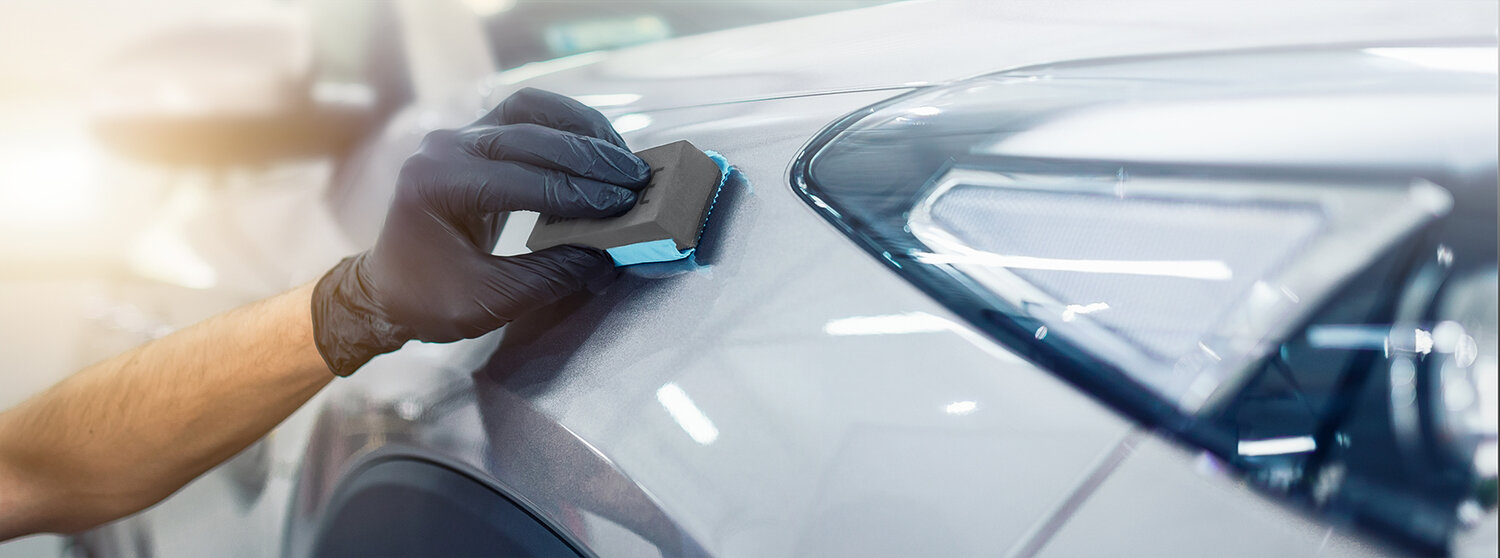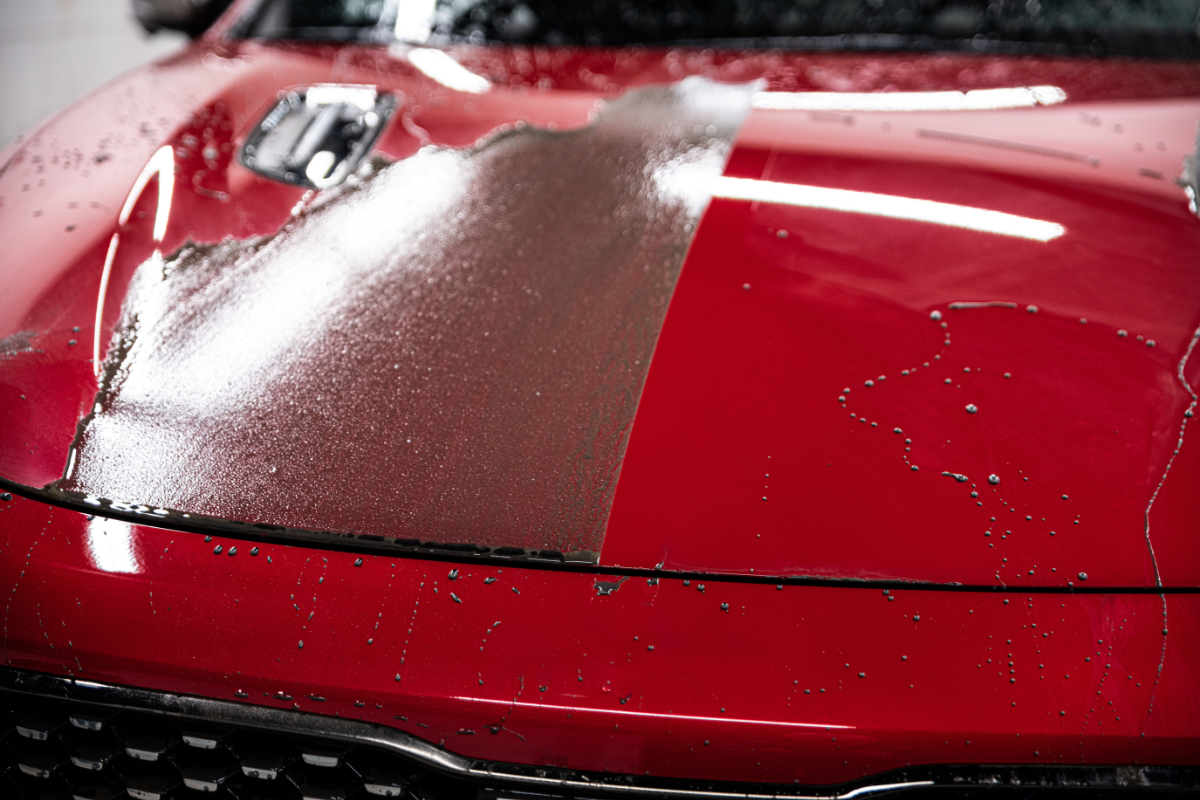Discovering Different Types of Ceramic Coating for Numerous Vehicle Finishes
Discovering Different Types of Ceramic Coating for Numerous Vehicle Finishes
Blog Article
Introduction Porcelain Coating: The Essential Shield Your Lorry Deserves
In an era where preserving the structural and aesthetic stability of automobiles is critical, ceramic covering emerges as an engaging solution, offering a robust protective guard unlike any various other. As we check out the transformative influence of ceramic layer on car preservation, one have to think about the nuanced benefits this innovation provides over standard methods.
Understanding Ceramic Coating
On the planet of auto enhancement, something that regularly piques the rate of interest of car enthusiasts and experts alike is ceramic finish. At its core, ceramic finish is a liquid polymer put on the exterior of a vehicle, developing a chemical bond with the lorry's factory paint. This safety layer, mostly made up of silicon dioxide (SiO2), is crafted to provide a resilient guard against environmental pollutants.
The application process is thorough, requiring a tidy and dust-free atmosphere to ensure optimal bond and uniformity. This coating kinds a semi-permanent bond with the lorry's paint, which means it doesn't clean away or break down like standard waxes or sealers, though it might need reapplication in time as a result of ecological wear.
Ceramic finishes offer a high degree of solidity which contributes to its toughness, making it a preferred choice for those seeking lasting protection for their automobiles. The layer is transparent, improving the all-natural gloss and deepness of the paint, thereby maintaining the automobile's aesthetic charm. It is crucial, nevertheless, to understand that while ceramic finishings give a robust surface area layer, they are not unsusceptible all physical damage, such as deep scrapes or dents.
Advantages of Ceramic Coating
Sturdiness is a characteristic of ceramic finishing, using vehicle owners a tangible advantage by substantially improving the longevity of their lorry's outside. This advanced protective layer produces a robust shield against ecological risks such as UV rays, oxidation, and chemical impurities. By developing a semi-permanent bond on the automobile's surface area, ceramic finishes stand up to the rigors of daily exposure to the aspects, hence maintaining the paintwork's honesty and vibrancy for an extensive duration.
Furthermore, the hydrophobic nature of ceramic finishings is an additional considerable advantage, as it effectively pushes back water and protects against the build-up of dirt and grime. This residential or commercial property not only keeps the vehicle cleaner for longer durations but likewise simplifies the maintenance routine, reducing the regularity and effort required for washing. The slick surface of the finish lessens friction, guaranteeing that impurities glide off conveniently without sticking to the paint.
In addition, ceramic finishes improve the visual appeal of lorries by augmenting the gloss and deepness of the paint. This develops an aesthetically striking finish that can measure up to the appearance of a fresh waxed vehicle, without the need for continuous reapplication. In general, ceramic layers provide a mix of protection, convenience of upkeep, and superior looks, making them an important financial investment for car owners.
Application Procedure Explained
Comprehending the process of applying ceramic finish is essential for attaining the safety and aesthetic benefits formerly reviewed. This step is crucial as it guarantees the finish can appropriately bond to the lorry's surface area.
Next, the surface is clayed to remove any kind of embedded impurities that cleaning might not remove. Following this, a paint correction procedure might be required to address any kind of scratches or blemishes, as ceramic finish can intensify existing defects as opposed to conceal them. When the surface area is excellent and prepared, the ceramic finishing is used in tiny, manageable areas utilizing an applicator pad.

Contrasting to Traditional Wax
When taking a look at ceramic layers and typical wax, one have to think about the unique benefits each offers for automobile defense. Conventional wax has long been valued for its capacity to boost a cars and truck's sparkle and supply an essential layer of security against aspects like UV rays and small scratches. It is fairly simple to apply and can be a cost-efficient solution for those seeking momentary defense. Wax offers a deep, shiny surface that several cars and truck enthusiasts appreciate, her latest blog making it a prominent choice for improving visual allure.
Nevertheless, ceramic finishes offer an extra innovative type of security. Unlike wax, which commonly calls for reapplication every couple of months, ceramic finishings can last numerous years with appropriate treatment, supplying lasting protection and lowering upkeep efforts.
In significance, while typical waxes give a cost-efficient means to accomplish short-term gloss and security, ceramic coverings deliver an even more sturdy, resistant guard, ensuring an automobile's architectural and aesthetic stability gradually.
Keeping Your Ceramic Finishing
Maintaining a ceramic layer requires a mindful approach to ensure its longevity and effectiveness. Unlike conventional wax, a ceramic finish provides a resilient layer of defense, but it requires appropriate care to maintain its honesty.

Auto parking in shaded or covered locations can assist protect the coating from lengthened UV direct exposure, protecting the automobile's appearance. By sticking to these maintenance methods, the ceramic finishing can properly supply long-lasting protection and visual appeal.
Verdict
Ceramic coating represents a considerable improvement in vehicle treatment, using a durable protective layer that chemically bonds with lorry paint. Its benefits, including UV resistance, oxidation prevention, and hydrophobic properties, dramatically surpass those of traditional wax. The semi-permanent nature of ceramic finish ensures long-lasting ease and gloss of maintenance, boosting both the appearance and longevity of vehicles. Adoption of ceramic finishing is a sensible selection for those seeking to enhance and protect the architectural and aesthetic stability of their cars.
At its core, ceramic covering is a liquid polymer used to the exterior of a lorry, developing a chemical bond with the vehicle's manufacturing facility paint.Ceramic finishings supply a high level of firmness which contributes to its resilience, making it a chosen choice for those looking for long-term protection for their vehicles.Sturdiness is a hallmark of ceramic finish, using lorry proprietors a concrete advantage by considerably boosting the long life of their car's outside. Overall, ceramic finishes use a mix of protection, ease of upkeep, and superior visual appeals, making them a vital investment for automobile proprietors.
When analyzing ceramic coatings and Continued conventional wax, one need to think about the unique advantages each offers for lorry defense.
Report this page